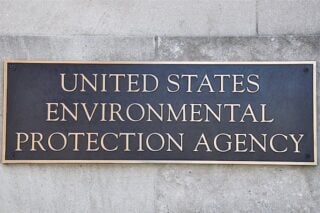In October 2014, an in-principle $1 billion deal was struck to finance the purchase and demolition of 1,021 Canberra homes that were considered unsafe to live in due to asbestos. These were called “Mr. Fluffy” homes as they were filled with the deadly loose-fill asbestos brand of insulation. 1,000+ homes were affected from the late 60s into the late 70s when the company went under.
Asbestos exposure cases like this may not lead to a disease diagnosis for years to come. Mesothelioma cancer has a long latency period and can be difficult to diagnose. Imaging scans and biopsies should be completed to confirm its presence and determine the level and severity.
Now Asbestos Response Taskforce officials say they were unsure of the deal as the Australian Capital Territory (ACT) government started buying back homes before the loan had been secured. The deal represented two governments. First, Katy Gallagher, Chief Minister of ACT, and second, Eric Abetz, Federal Employment Minister of Commonwealth.
The ACT government said it had to buy some of the houses before it secured funding seeing as the properties were too toxic. Many homeowners had been advised by asbestos assessors to leave their properties due to significant contamination in the living areas of their houses.
Andrew Kefford and Fiona Barbaro of the taskforce cite the deal collapsing due to the list of homes not being able to be made public. The government said it hoped to give homeowners more time to consider the buyback without having the location of their home publicly-known. The official list will stay concealed until July, but many unauthorized copies have already been made public through tradespeople.
“The government recognizes that the location of the properties will have to be made public in the future for the continued administration of the buyback and demolition program,” said a government spokesman.
In 2014, tests in many of the homes found levels of asbestos that were deemed unsafe in living areas, children’s bedding, toys, and clothes. “The taskforce made a decision to act on these cases as soon as possible in the best interests of those residents,” said a taskforce spokesperson.
Another spokeswoman of the taskforce stated she was “disappointed if the company’s mail-out has created distress for homeowners. We encourage any homeowner with concerns around the letter to contact the company directly to advise them of this.”
Owners such as Katie Williams and Daniel Lawrence thought the “fluffy stuff” was simply cobwebs or roof dust. Other homeowners would prefer to buy back their own land and rebuild. All of the residents’ homes will be demolished and they’ll need to buy new ones in Australia’s currently unstable housing market.
Officials in the near state of New South Wales also found 60 homes that had used Mr. Fluffy loose-fill asbestos. Apparently residents across the border were not included in the unsuccessful mass clean-up in Canberra over 20 years ago.





